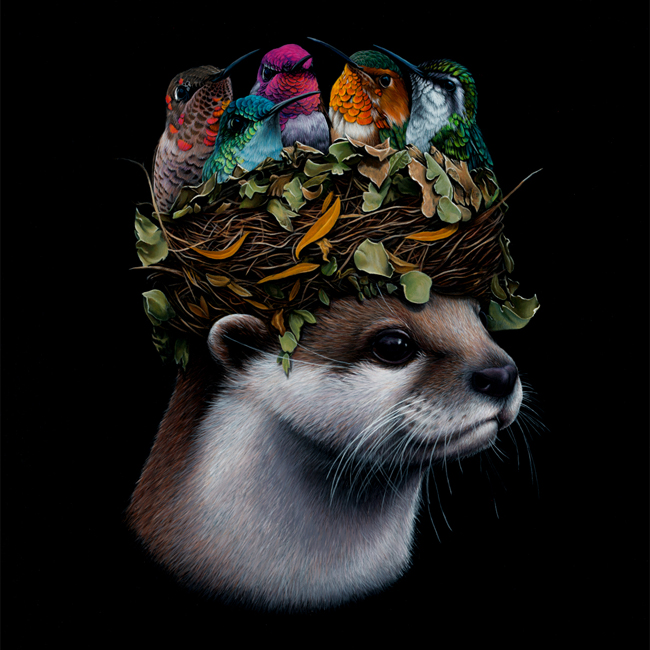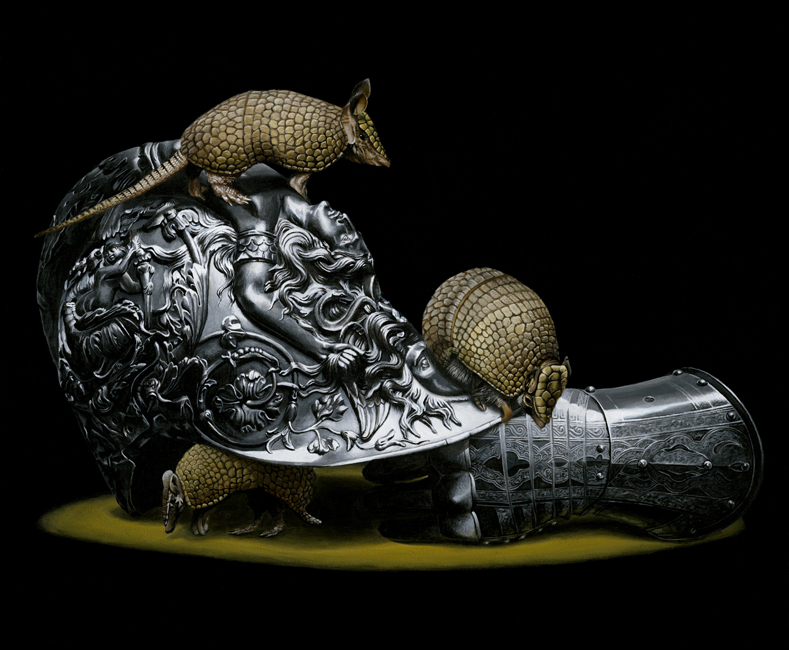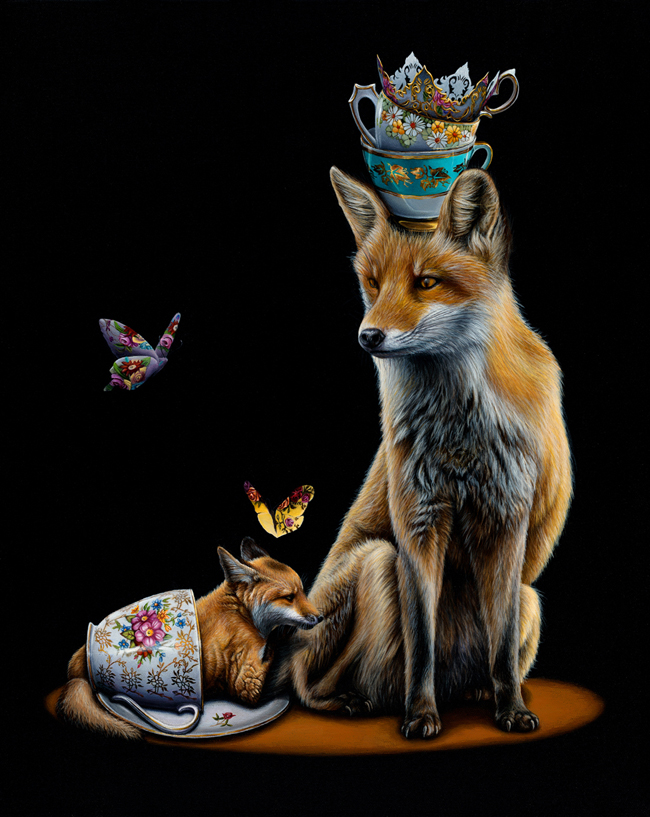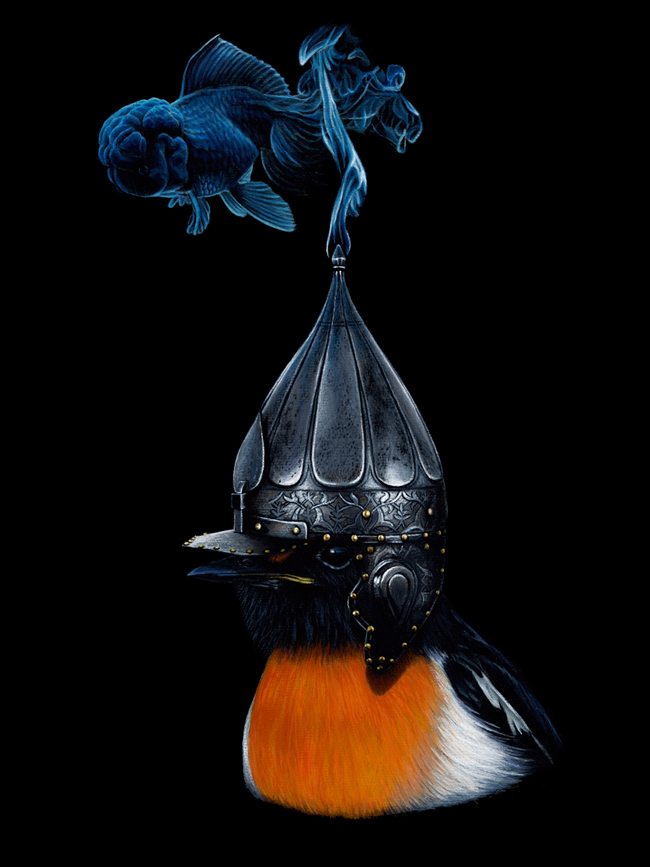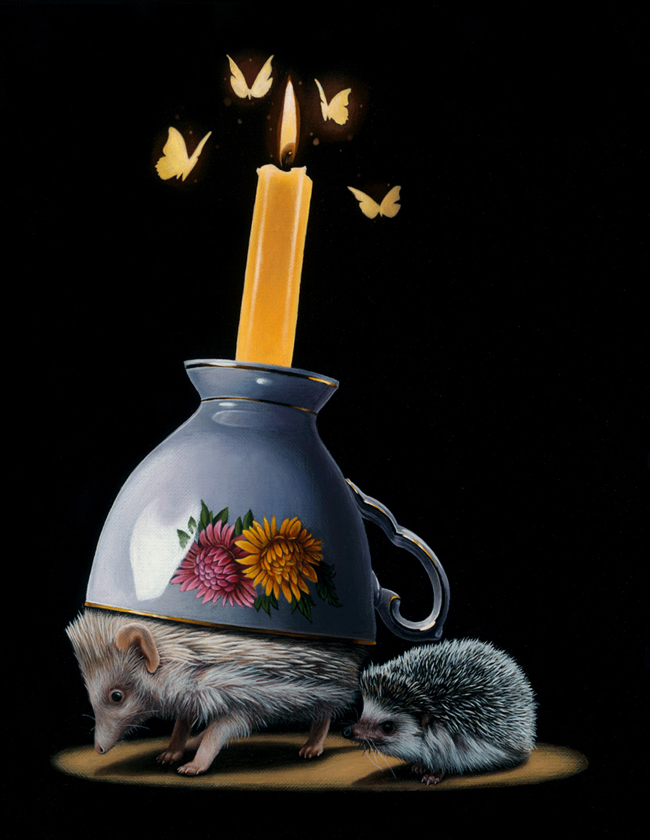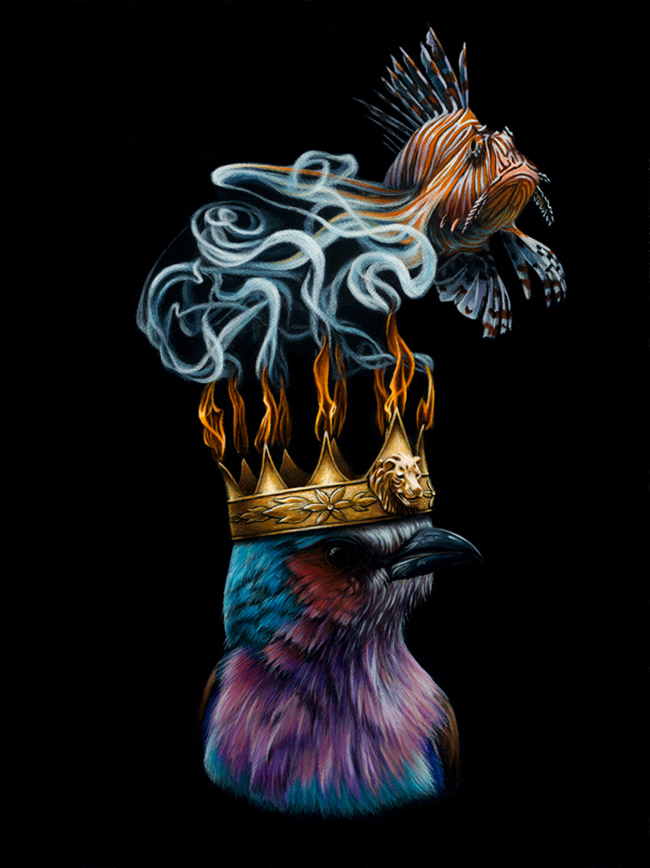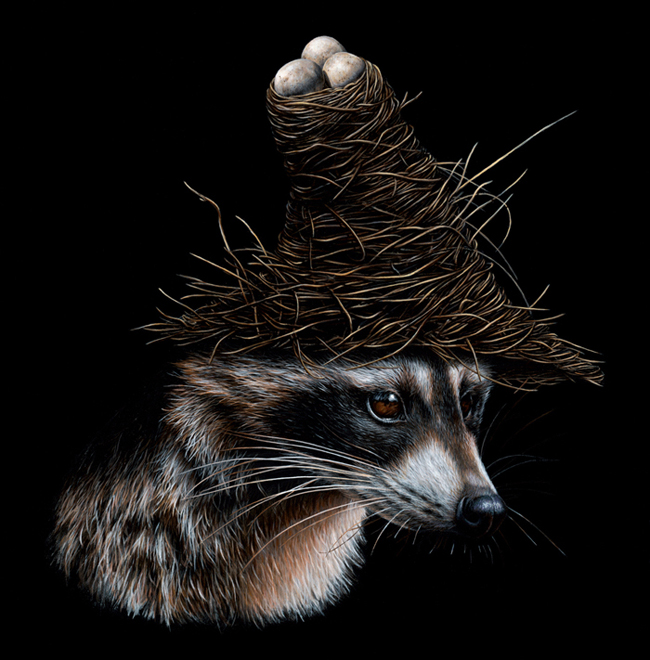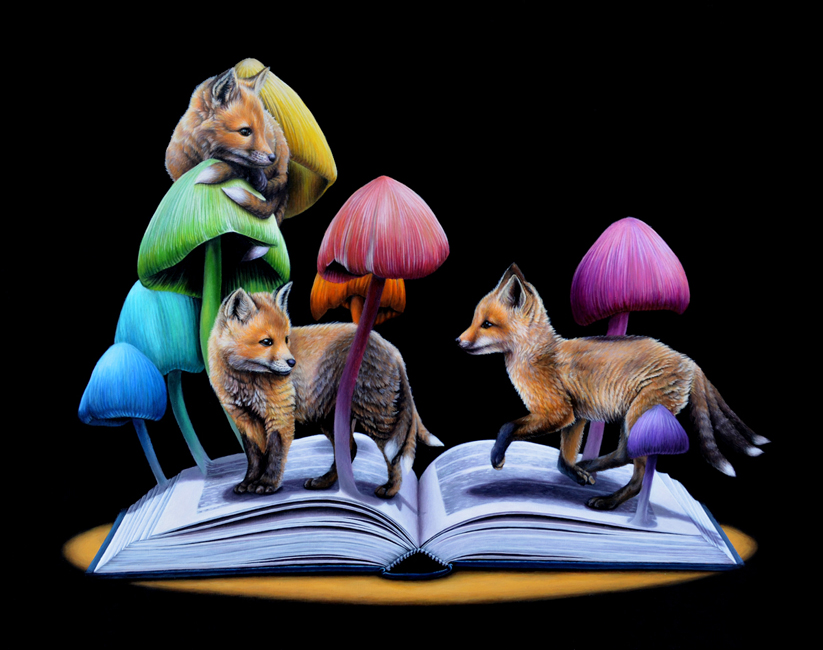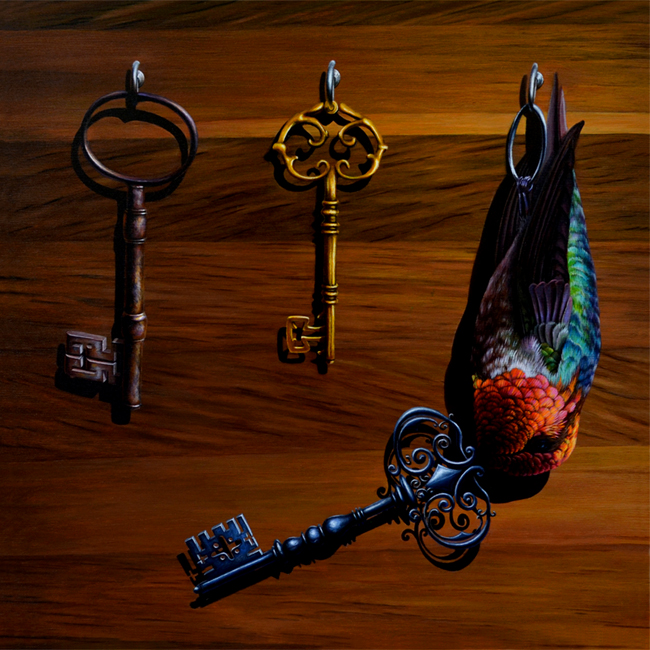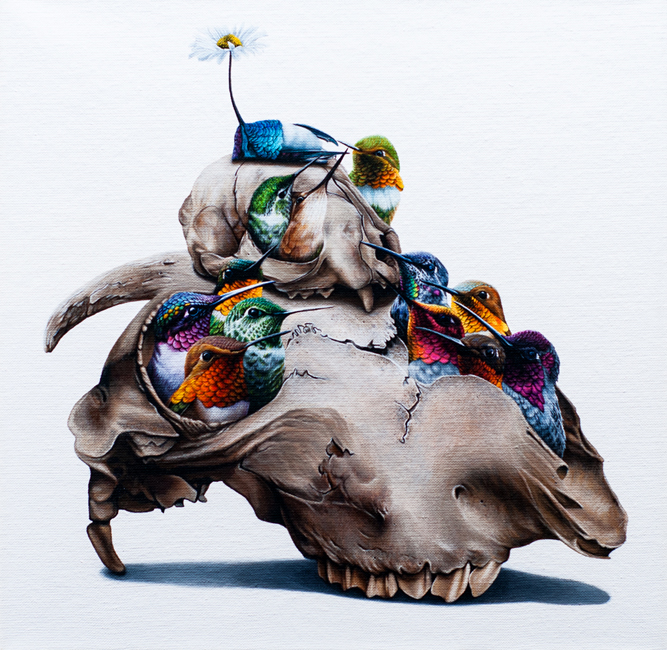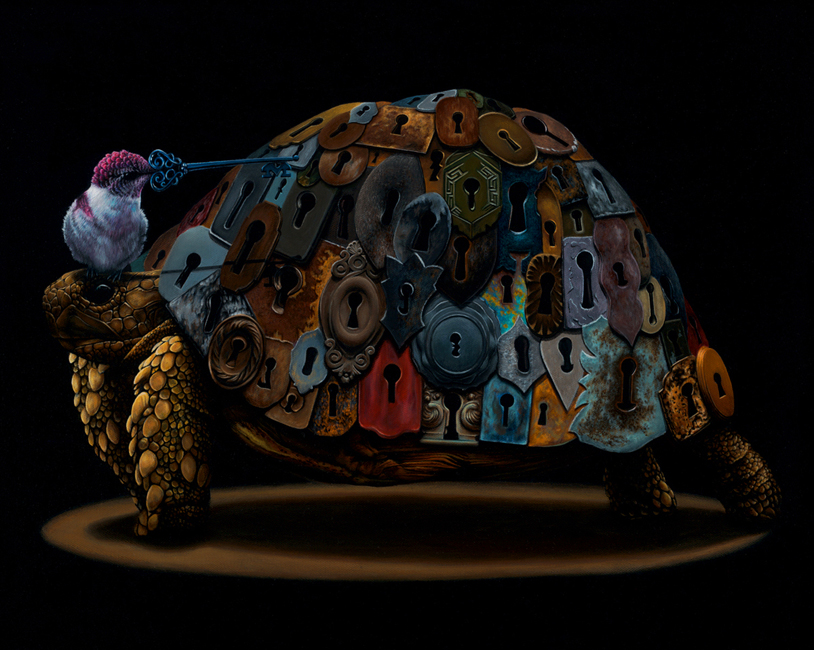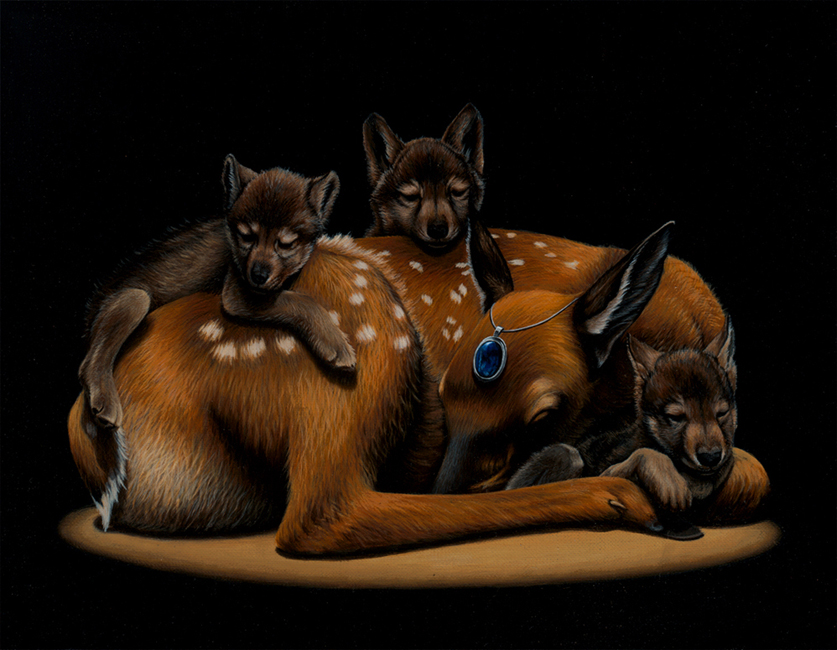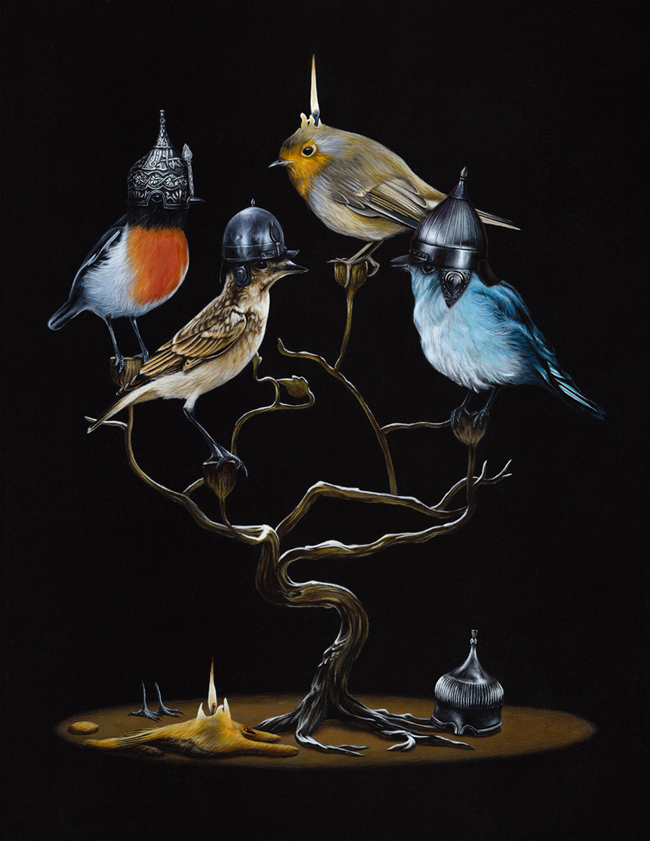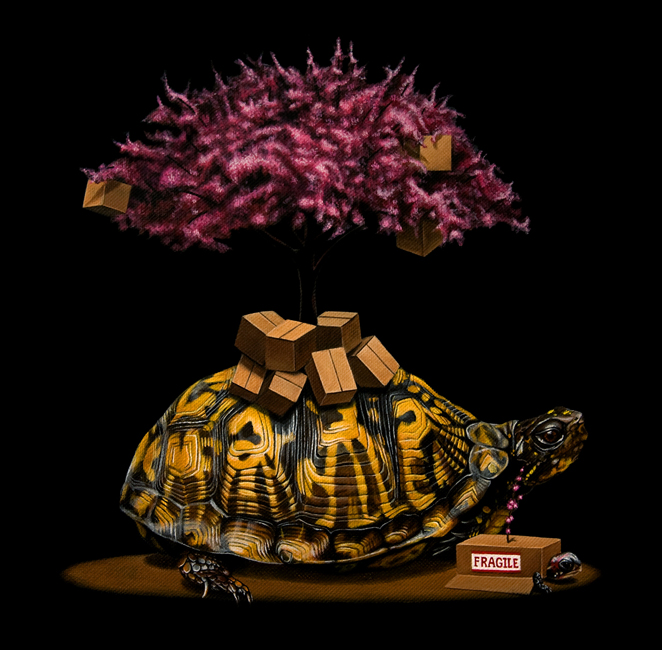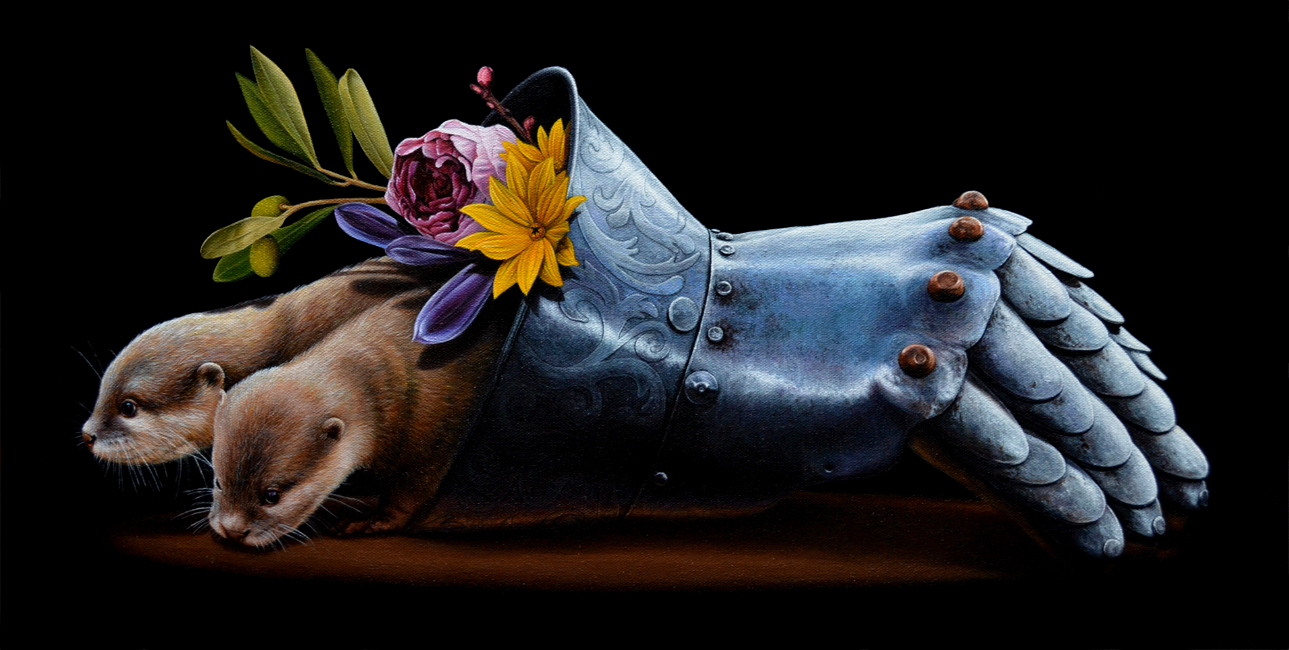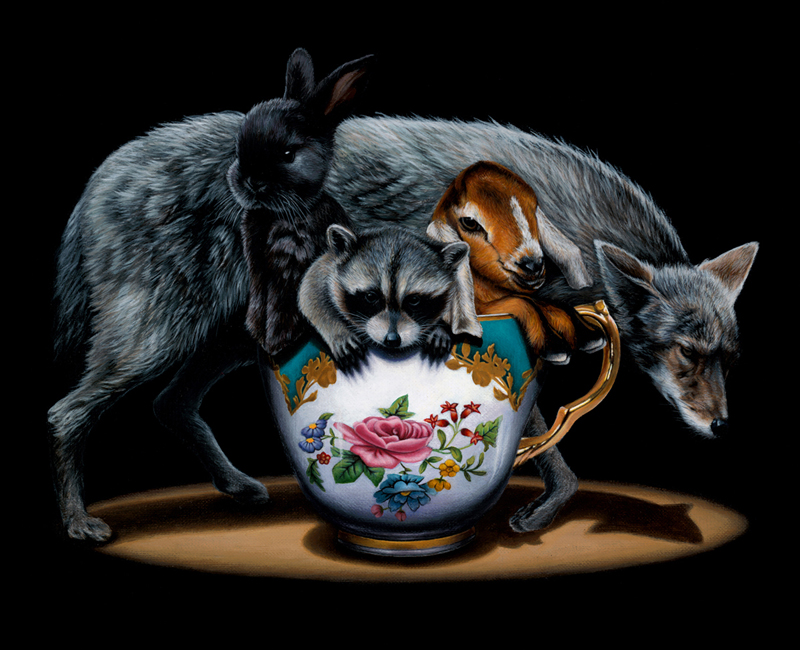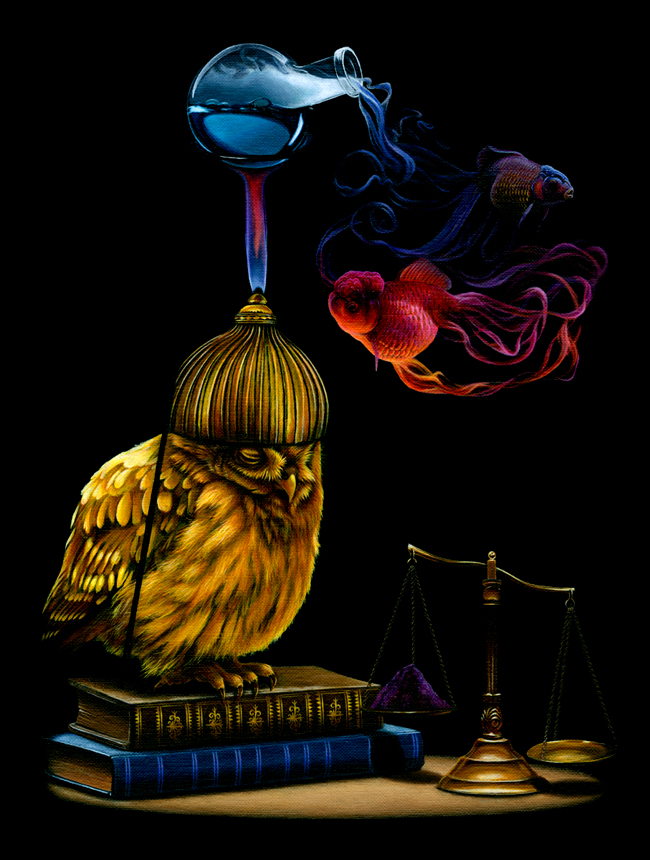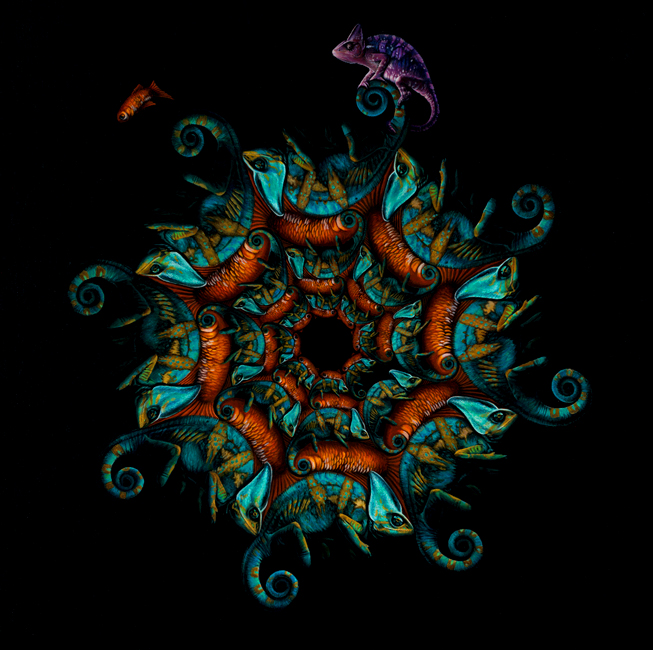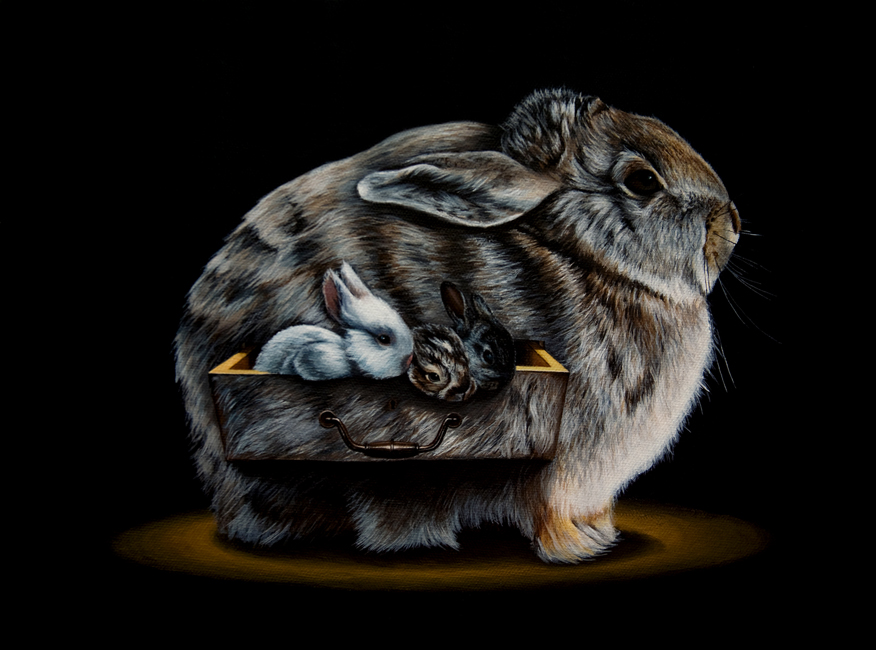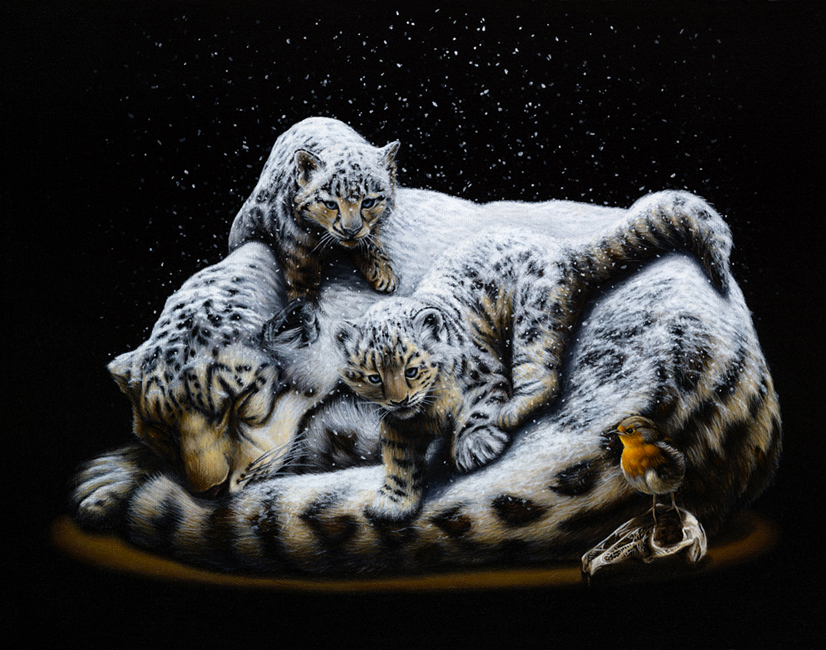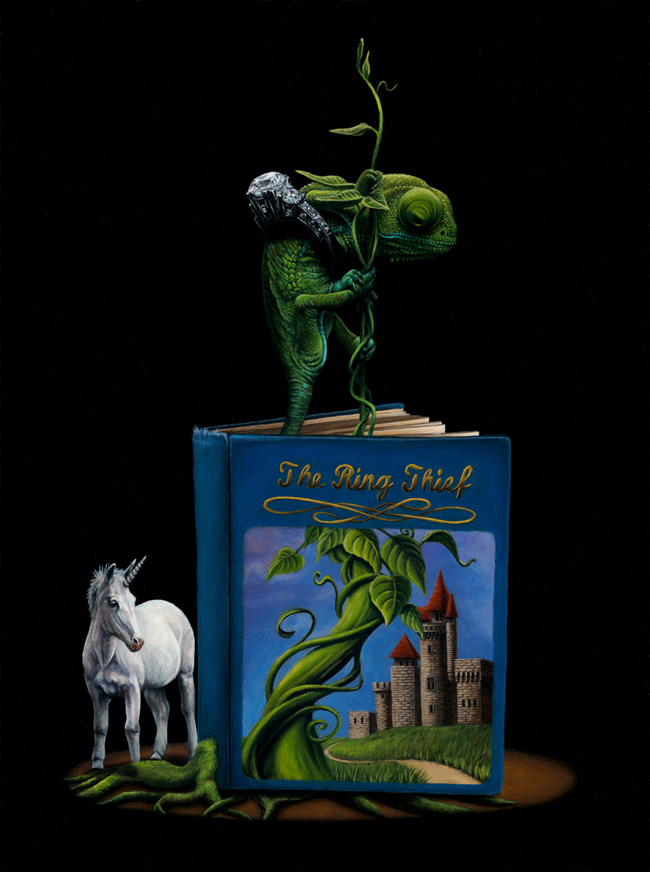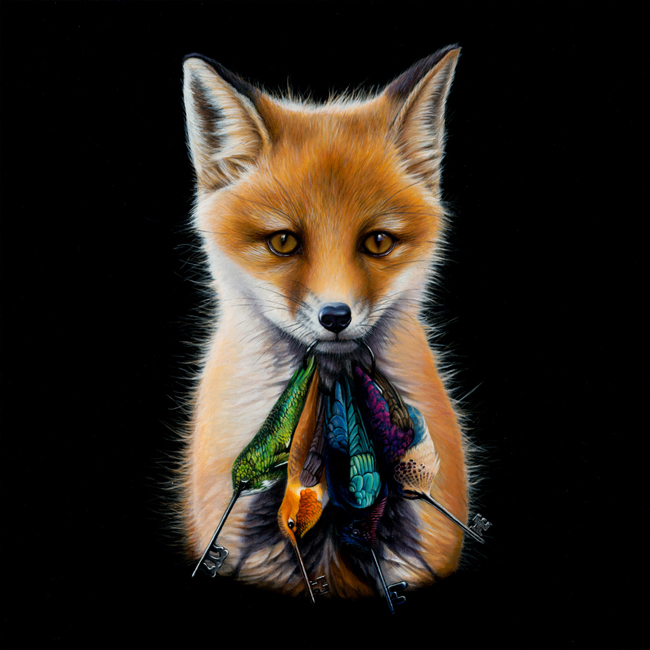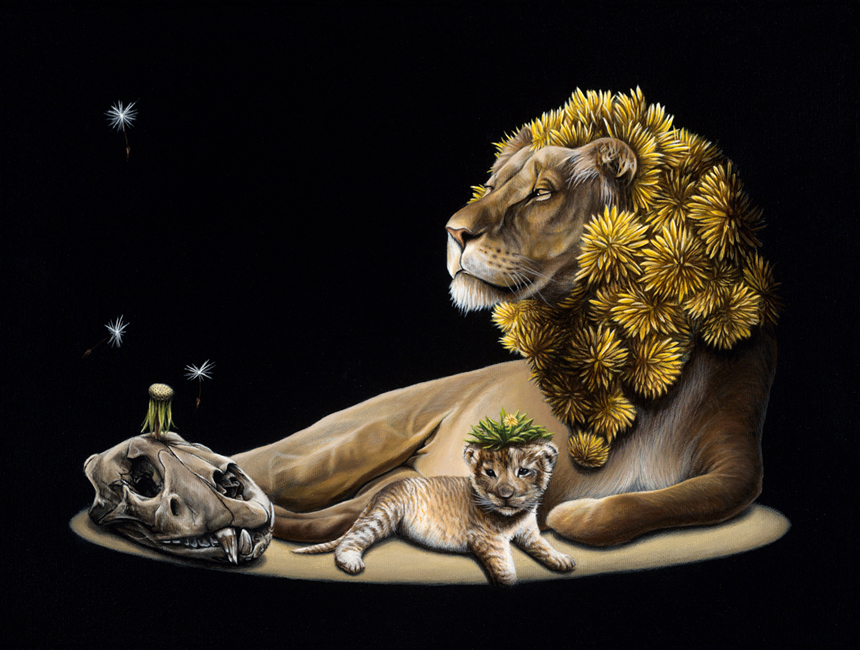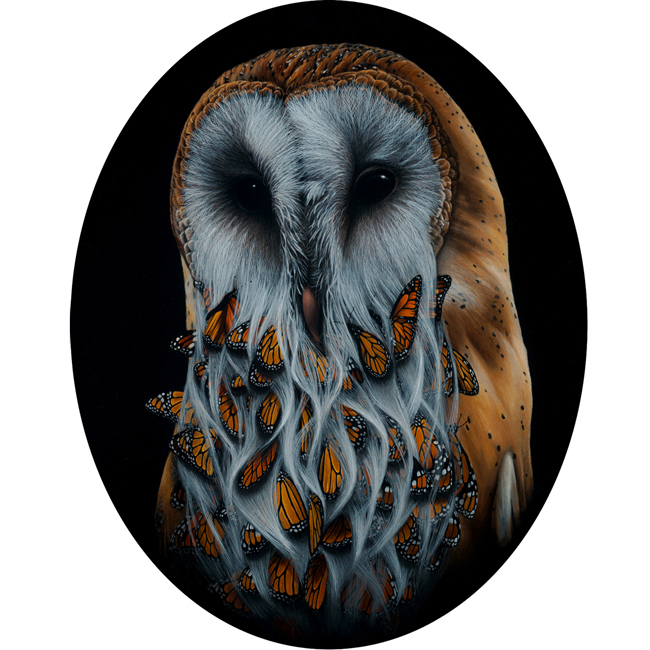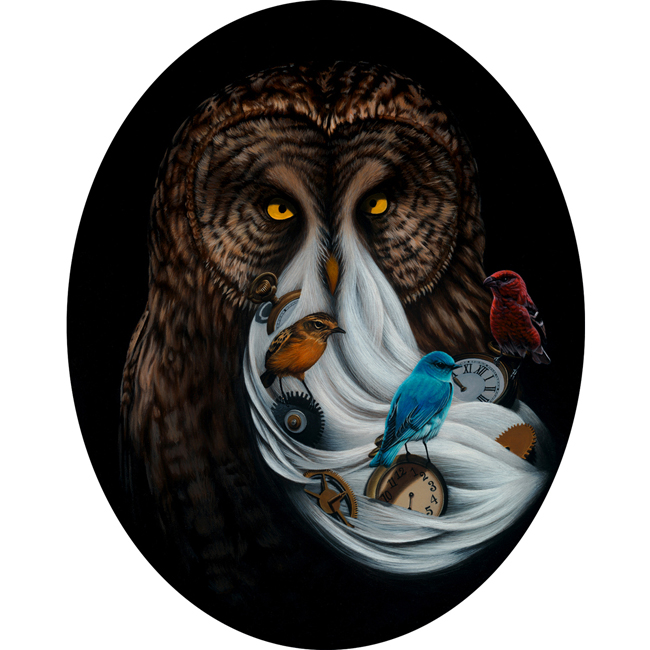Jacub Gagnon’s surreal imagery is conceived in a world where the limitless possibilities of interconnectedness and its unseen bonds are the one true reality. Through the marriage of unlikely events and entities, Gagnon succeeds in opening the lid on intriguing philosophical questions concerning what lies beyond the leagues of perception and understanding our species can achieve, given the five senses with which we’ve been granted to navigate the universe. Often taking inspiration from language and interesting turns of phrase, Jacob builds narratives which may initially seem absurd, however, closer analysis uncovers a wealth of multi-layered associations, made all the more potent by their relationships with discourse and communication. Through our engagement with Gagnon’s wonderful array of surreal correlations between natural and man-made, the new connections we make may take us to destinations filled with illumination and enlightenment.
Jacub Gagnon is a Canadian artist who was born in 1987. He graduated with a BFA from the Ontario College of Art and Design (OCAD) in 2009. In the short time since he left College, Jacub has made a well deserved impact within the New Contemporary Art scene and regularly exhibits his artwork both at home and abroad.
WOW x WOW is very honoured to bring you the following interview with Jacub, in which he discusses the themes explored in his work, the challenges of being an artist and what the future holds for him.
Hi Jacub, we really appreciate you taking the time out to chat. First off, can you tell us about your background and what lead you down the path of choosing a career in the arts?
I can honestly say that I never dreamed of having a career in the arts until much later in my life. Drawing was always a passion of mine; I had a compulsive urge to sketch in the corners of all my notebooks during grade school and would often take the lead on posters and projects that required visual aids. I had many hobbies and activities going on in my life though, art was just the one that stood the test of time. Throughout high school it was always my intention to pursue a career in landscape architecture, but a week before sending out University applications I read a pamphlet on OCADU (the Ontario College of Art and Design University) and thought, “hey, that might be cool.” I heard back from OCAD before any other school and out of pure excitement and enthusiasm had made my decision. Leading up to graduation, I started to realize my original plan to teach required more schooling, which didn’t appeal to me. I participated in a school exhibit where, for the first time, folks were interested in buying my art. That sparked the idea that I might sell art for a living, which had never occurred to me before then.
We interviewed Canadian artist Sarah Joncas last year, who graduated with a BFA from Ontario College of Art and Design, as did you. It would be interesting to hear your thoughts on the training you received and how your experiences helped to shape the artist you have become?
I remember seeing Sarah when I first started at OCAD, she was quiet and kept to herself, with her ever-present ball cap and headphones. I was immediately blown away by her charcoal drawings and, in years to come, her amazing paintings. Sarah’s work introduced me to the world of pop-surrealism and the art scene in LA. At the time, the scene was completely foreign to me, including Thinkspace Gallery, which has been a second home to my work for the past 6 years. I am forever grateful for that introduction to this type of art and the opportunities it’s led me to. You rock, Sarah!
I have mixed feelings about my formal training at OCAD, which also resulted in a BFA. I did receive instruction in life-drawing and similar courses, and I was introduced to new mediums. I had four years to explore art on my own terms, bringing life to my thoughts and ideas, and many opportunities to practice my technique which quickly sharpened into the detail I love to produce today. That said, art is such an individual process, it doesn’t quite lend itself to institutional grading systems. I found the process of marking and critiquing to be very subjective and thus often unhelpful. I also wish I had found a way to learn a bit more about the real-life logistics of selling art. All said, it was a mixture of my training, and life events which brought me to where I am today.
Please give us a little insight into your creative process?
This is one question I get asked a lot, but I often find that my process changes frequently. More often than not I’ll be just living my life, eating some Cap’n Crunch, or walking the dog (not the yo-yo move), and an idea will hit me. I find it difficult to come up with an idea or concept when sitting down with my sketchbook or when I force myself to work. One method I find that works for me is lying on the couch or in bed, eyes closed, and letting my ideas form pictures in the blank space. My work is always driven by a spark and often I will sketch out multiple variations before deciding upon one to start painting.
You’ve stated that your paintings explore the concept of connectivity and in particular connections that arise from unnatural and unexpected sources. Can you expand on this concept for us and talk a little about where your initial interest and motivation to examine the subject came from?
We live in a strange time, we’re the most connected to one another as we’ve ever been, and yet in the same instance, that connectivity often extends only as far as our smartphone to the closest wifi. I think for a lot of us that creates a tension, and a yearning to understand this new world, how we all fit in it together and also with nature. At least, it did for me. One of the ways that I process this is through my art. I love the idea that when you place two unrelated subjects side by side, looking at the image, a narrative often emerges to tie them together. I didn’t originally think of it this way, but over the years I’ve realized a big part of what motivates me to examine this connectivity is the storytelling involved.
Who or what are some of the major influences on your current work?
There are a number of my contemporaries that blow me away, probably too many to name, but I will try to mention a few. Greg Simkins; not only does his mind work in a freakishly beautiful way, but he possess an ability to paint anything he can visualize. Josh Keyes for recently breaking out into new territory and being successful. Joe Sorren and Sainer for their beautiful palettes. Esao Andrews for his vibrant and awesome subjects. This list could just keep going, and going and going and…
What thoughts and feelings do you hope that the viewers of your paintings take away with them?
Wonderment. A question. Self-reflection. Curiosity. A smile. Any and all thoughts and feelings are appreciated, if a connection is made and thoughts are inspired, I’ve done what I set out to do.
Earlier this year you had a painting in the landmark ’20 Years Under the Influence of Juxtapoz’ exhibition (the show, which was co-curated by Andrew Hosner of Thinkspace Gallery and Gary Pressman of Copro Gallery, was held at Los Angeles Municipal Art Gallery). Can you tell us what being a part of this show meant to you and what kind of influence Juxtapoz magazine has had on you personally?
When I was asked to be in this show I felt beyond honoured. It feels like just a few short years ago that I looked up to many of the exhibiting artists as being the faces of this New Contemporary movement. These artists have been the greatest of influences on me and my work, and Juxtapoz magazine was the window into many of their lives and worlds. It all felt a little surreal to be a part of the show and my work never felt more at home.
Being an artist of prominence and a regular exhibitor within the New Contemporary Art scene, what are your thoughts on the movement and also your hopes for it’s future?
This is a tough question and one that I feel deserves much, much more that I can write in a few sentences. I love this ‘New Contemporary’ art scene, I think it’s what I’ve been looking for my whole life in regards to my work. But then, art is a funny thing. Throughout time and history it is always present and will forever continue being present, it’s an unstoppable force within us that will without fail find it’s way to the surface. Movements in art, as in all things, are just a sign of the times, labels of an era that define one’s place. I try not to get too caught up into these labels and just focus on what I love and enjoy doing. I was once told by a very prominent art professor, “People don’t paint with those colours and in that style anymore,” to which I replied, “Well, I just did.” My point is, you can’t hold steadfast in any genre of art, because by it’s own nature it is changing. What I hope for the future of New Contemporary art is that it will evolve into to something new, because that is and always will be what creates the most wonderful art.
A recent painting you did for the ’11th Hour’ show at Last Rites Gallery, entitled ‘Pushing Daisies’, broke away from your signature black background, by having a reversed out white one instead. What brought about this change and how do you see your work evolving in the future? Also, do you ever feel any pressure to keep painting in the style you have become known for?
There is always a little pressure to continue with the style I’ve become known for, but I think change is inevitable. I actually hope that it is, because to me the most exciting thing about art is that anything and everything is possible, so why limit yourself? As for the painting mentioned above, ‘Pushing Daisies’ was not originally intended for a white background, but I did the preliminary work on white and I thought to myself, “This is a nice change,” and kept it. After deciding to leave the background white, I started to really enjoy the play between a dark theme and the bright white of the canvas, not to mention it was a small reprieve from having to stare at black all the time. In the future, who knows? I like the idea of playing with some new backgrounds…I have quite the fondness for pink!
What do you find to be the most challenging aspect of being an artist?
This is a tricky question to answer, but if I had to say one that I find especially challenging for myself, I would say not being more connected to the art scene. It’s been close to 5 years since the last show I participated in here in Canada. The majority or my shows take place in other countries, mostly in the US. Not to mention, generally where I live doesn’t exhibit a large art scene that I connect with. I spend much of my time in my studio and it’s hard not having the art world around me.
If you could own one piece of art from the world’s collections, what would it be?
Tough question, maybe a painting by Zdzisław Beksinski. Or something a little less haunting such as mural by Etam Cru or Greg Simkins in my living room!
What’s next for Jacub Gagnon?
I just finished a piece for SCOPE Miami (via Thinkspace Gallery) that I’m very excited to exhibit and am next starting on pieces for Roq La Rue and Antler Gallery group shows. After that I’ll be gearing up for my solo show with Thinkspace Gallery at the end of 2016.

